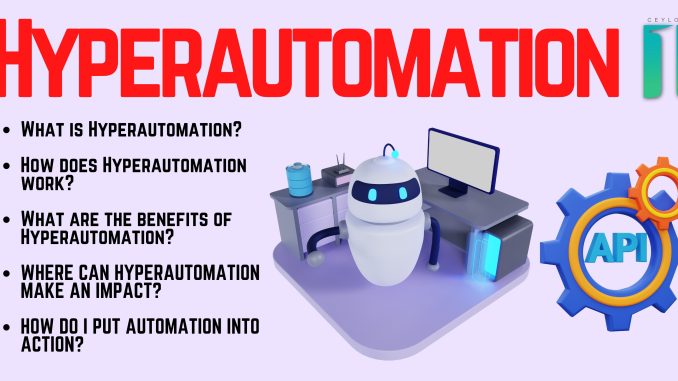
Hyperautomation is rapidly becoming a cornerstone of digital transformation strategies across industries, offering a more advanced and holistic approach to automating business processes. Unlike traditional automation, which typically focuses on repetitive, rule-based tasks, hyperautomation combines multiple technologies—such as robotic process automation, artificial intelligence, machine learning, and advanced analytics—to automate complex workflows end-to-end. The goal is not just to reduce manual effort but to create intelligent systems that can adapt, learn, and evolve over time. As organizations face mounting pressure to improve efficiency, reduce costs, and remain competitive, hyperautomation presents a compelling solution that goes beyond simple task automation.
At the heart of hyperautomation is the idea of orchestrating a suite of technologies to work together seamlessly. Robotic process automation, or RPA, serves as the foundation, handling structured tasks like data entry, invoice processing, and system updates. These bots mimic human actions within digital systems, executing tasks quickly and without fatigue. However, RPA alone has limitations—it struggles with unstructured data and decision-making. That’s where artificial intelligence and machine learning come into play. By integrating AI, businesses can teach systems to interpret documents, recognize patterns, and make decisions based on historical data. For instance, an AI-enhanced bot might analyze customer emails to determine sentiment and route inquiries to the appropriate department, something a basic RPA tool couldn’t manage on its own.
Hyperautomation also relies heavily on process mining and analytics to identify opportunities for automation. These tools examine existing workflows, uncover inefficiencies, and suggest areas where automation can deliver the greatest impact. Rather than relying on anecdotal evidence or manual audits, organizations can use data-driven insights to prioritize automation initiatives. This approach ensures that resources are allocated strategically and that automation efforts align with broader business objectives. For example, a financial services firm might use process mining to analyze loan approval workflows, discovering that certain steps consistently cause delays. With that insight, they can automate document verification and credit scoring, accelerating approvals and improving customer satisfaction.
One of the defining characteristics of hyperautomation is its scalability. Traditional automation often hits a ceiling when processes become too complex or require human judgment. Hyperautomation, by contrast, is designed to scale across departments, functions, and even entire enterprises. It’s not limited to back-office operations—it can extend to customer service, supply chain management, HR, and beyond. This scalability is enabled by low-code and no-code platforms, which allow business users to build and deploy automation solutions without deep technical expertise. These platforms democratize automation, empowering teams to innovate and solve problems independently while maintaining governance and oversight.
The benefits of hyperautomation are multifaceted. Operational efficiency is an obvious gain, as automated systems can perform tasks faster and with fewer errors than humans. But the impact goes deeper. By freeing employees from mundane tasks, hyperautomation allows them to focus on higher-value activities such as strategy, innovation, and customer engagement. This shift not only boosts productivity but also enhances job satisfaction and retention. Moreover, hyperautomation provides real-time visibility into operations, enabling leaders to make informed decisions and respond quickly to changing conditions. In industries like manufacturing, this can translate into predictive maintenance, optimized production schedules, and reduced downtime.
Customer experience is another area where hyperautomation delivers significant value. In today’s digital-first world, customers expect fast, personalized service across channels. Hyperautomation enables businesses to meet these expectations by integrating data from multiple sources and automating responses. For example, an e-commerce company might use hyperautomation to track orders, manage inventory, and handle returns—all while providing customers with real-time updates and support. The result is a smoother, more responsive experience that builds trust and loyalty. As competition intensifies, the ability to deliver seamless service becomes a key differentiator.
Despite its promise, implementing hyperautomation requires careful planning and change management. Organizations must assess their readiness, define clear goals, and build a roadmap that aligns with their strategic vision. It’s not just about deploying technology—it’s about rethinking how work gets done. This often involves redesigning processes, reskilling employees, and fostering a culture of continuous improvement. Leadership plays a crucial role in driving adoption, setting expectations, and ensuring that automation initiatives are aligned with business priorities. Without this alignment, even the most sophisticated tools can fall short of delivering meaningful results.
Security and compliance are also critical considerations. As automation touches more parts of the business, ensuring that data is handled securely and that processes comply with regulatory standards becomes increasingly important. Hyperautomation platforms must be designed with robust controls, audit trails, and governance frameworks to mitigate risk. This is especially vital in sectors like healthcare and finance, where data sensitivity and regulatory scrutiny are high. By embedding compliance into the automation architecture, organizations can innovate confidently while maintaining trust and integrity.
Looking ahead, hyperautomation is poised to become a defining feature of the modern enterprise. As technologies continue to evolve and integrate, the boundaries between human and machine work will blur further. Businesses that embrace hyperautomation will be better equipped to adapt, compete, and thrive in an increasingly complex and fast-paced environment. It’s not just a trend—it’s a strategic imperative that reflects the future of work. By combining the precision of machines with the creativity of humans, hyperautomation offers a path to smarter, more agile organizations that are ready for whatever comes next.